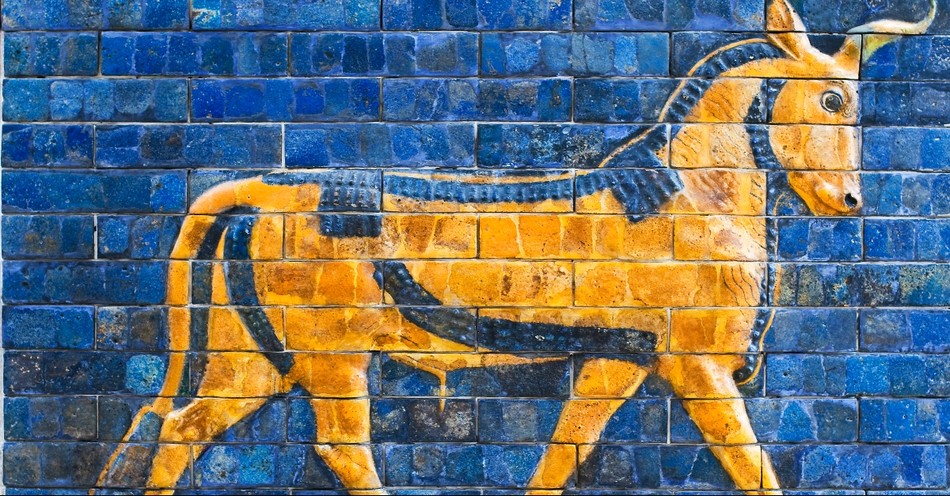“Behold, you trust in deceptive words to no avail. Will you steal, murder, commit adultery, swear falsely, make offerings to Baal, and go after other gods that you have not known, and then come and stand before me in this house, which is called by my name, and say, ‘We are delivered!’—only to go on doing all these abominations? (Jeremiah 7:8-10)
Even those who have vaguely heard of the name Baal in the Bible know it doesn’t have a good connotation. But who is Baal? What do we know about the religion surrounding this Canaanite deity, and how did it affect those in the Old Testament?
In this article, we’ll discuss what Scripture says about Baal, what we know from history about Baal, and why this ultimately matters to us today.
Who Is Baal?
Baal was the supreme god of Canaan and Phoenicia, whose worship infiltrated Jewish religious life during the Judges and became popular in Israel during Ahab's reign. Baal means “lord” and was believed to be a fertility god who helped the earth produce crops and people have children. Different regions worshipped Baal in different ways, and special “denominations” of Baalism were formed. Baal of Peor and Baal-Berith are two examples of such localized deities.
Before we explore what Scripture says about Baal, let’s establish a brief depiction of the Canaanite deity. We’ll dive more into this in the historicity of Baal in a few sections.
Baal was the title of the "god" worshiped in ancient Canaan and Phoenicia. The worship of Baal penetrated Jewish religious life during the period of the Judges (Judges 3:7), became common in Israel during the rule of Ahab (1 Kings 16:31-33), and also influenced Judah (2 Chronicles 28:1-2).
Baal is a Canaanite and Phoenician deity and the son of the chief god El. In artistic depictions and archeological finds, Baal took the shape of a bull or ram and was associated with fertility.
This god also, apparently according to Canaanite lore, defeated El and had associations with the sun and thunder. And of all the foreign gods the Israelites came into contact with, they appeared to struggle the most with worshipping this one.
From Easton's Bible Dictionary:
Baal-Peor: lord of the opening, a god of the Moabites (Numbers 25:3; 31:16; Joshua 22:17), worshipped by obscene rites. So-called from Mount Peor, where this worship was celebrated, the Baal of Peor. The Israelites fell into the worship of this idol (Numbers 25:3,5,18; Deuteronomy 4:3; Psalm 106:28; Hosea 9:10).
Baal in the Bible
No doubt, we can’t cover the breadth of verses on Baal here, but we should note that Baal becomes a big player in the book of Judges and during the time of the kings when Israel appears to succumb most to the foreign pantheons.
For instance, Hezekiah’s son rebuilds the shrines of Baal and the Canaanite goddess Asherah that Hezekiah had torn down:
He rebuilt the high places his father Hezekiah had destroyed; he also erected altars to Baal and made an Asherah pole, as Ahab king of Israel had done. He bowed down to all the starry hosts and worshiped them (2 Kings 21:3).
One of the most famous instances of Israel going head to head with the prophets of Baal comes from 1 Kings 18. In this chapter, the prophet Elijah and the prophets of Baal have a show-down to prove the power of their God and gods.
Baal remains silent during the exchange, whereas God showers a sopping-wet altar with fire. All 450 prophets of Baal do not escape the slaughter that takes place after that.
In short, Scripture has nothing positive to say about Baal. Most often, it condemns Baal worship. An example of Israel going after Baal leads to their loss of direction and, ultimately, scattering at the hands of the Assyrians and the Babylonians.
In Matthew 12:27, Jesus calls Satan “Beelzebub,” linking the devil to Baal-Zebub, a Philistine deity (2 Kings 1:2). The Baalim of the Old Testament were merely demons masquerading as gods, and all idolatry is ultimately devil-worship (1 Corinthians 10:20).
Bible Verses about Baal
Jeremiah 7:9 - Will you steal, murder, commit adultery, swear falsely, make offerings to Baal, and go after other gods that you have not known,
Jeremiah 2:8 - The priests did not say, ‘Where is the Lord?’ Those who handle the law did not know me; the shepherds transgressed against me; the prophets prophesied by Baal and went after things that do not profit.
Jeremiah 23:13 - In the prophets of Samaria I saw an unsavory thing: they prophesied by Baal and led my people Israel astray.
1 Samuel 7:4 - So the people of Israel put away the Baals and the Ashtaroth, and they served the Lord only.
Hosea 2:16-17 - “And in that day, declares the Lord, you will call me ‘My Husband,’ and no longer will you call me ‘My Baal.’ For I will remove the names of the Baals from her mouth, and they shall be remembered by name no more.
2 Kings 21:3 - For he rebuilt the high places that Hezekiah his father had destroyed, and he erected altars for Baal and made an Asherah, as Ahab king of Israel had done, and worshiped all the host of heaven and served them.
2 Kings 17:16 - And they abandoned all the commandments of the Lord their God, and made for themselves metal images of two calves; and they made an Asherah and worshiped all the host of heaven and served Baal.
A Brief History of Baal
(And how it affected the Jewish people)
If anyone could get an award for “Having the Worst Neighbors,” it would most likely go to the ancient Israelites. It seemed they couldn’t border a single person who didn’t try to destroy them or convince them to worship their own gods.
And that happened with the Canaanites and Baal.
Archeological excavations have dated information about Baal back as far as the second millennium BC, and the spread of Baal worship caught fire in Egypt in 1400 BC. But it could have existed long before that, when God established the law, including laws against eating pork since pig slaughter and sacrifice were a hallmark of Baal worship.
Baal worship also included, at times, child sacrifice, which we see some Israelite kings engaging with later on.
Despite God’s efforts to dissuade them, the Israelites engaged with the Canaanite culture a little too much and adopted their practices, including Baal worship.
Even as the Canaanite religion waned, Baal took on a new role as Zeus in the Ancient Greek pantheon. Not only do the Jews have to deal with the abomination of Zeus and Antiochus Epiphanes IV (Daniel 8), but the Greek pantheon later gets repeated in the Roman pantheon, and practices from both the Greeks and Romans still exist today.
Why Does Knowing Who Baal Is in the Bible Matter?
Evil practices never go away. They simply evolve. Baal transformed into Zeus, who transformed into Jupiter, etc.
In addition to Baal still influencing religions and pagan practices today, we must take note of what happened to the Israelites and vigilantly watch our churches. How many pagan ideas have we let seep in? What modern-day Baals have we worshipped in place of God?
It may seem easy to point the finger at the ancient Israelites and say, “How could you let a bull statue into Israel? How could you worship Baal?” But if we don’t exercise extreme discernment, we may find ourselves doing the same with modern-day baals.
Photo Credit: ©iStock/Getty Images Plus/ggenova
Hope Bolinger is an acquisitions editor at End Game Press, book editor for hire, and the author of almost 30 books. More than 1500 of her works have been featured in various publications. Check out her books at hopebolinger.com for clean books in most genres, great for adults and kids. Check out her editing profile at Reedsy.com to find out about hiring her for your next book project.



